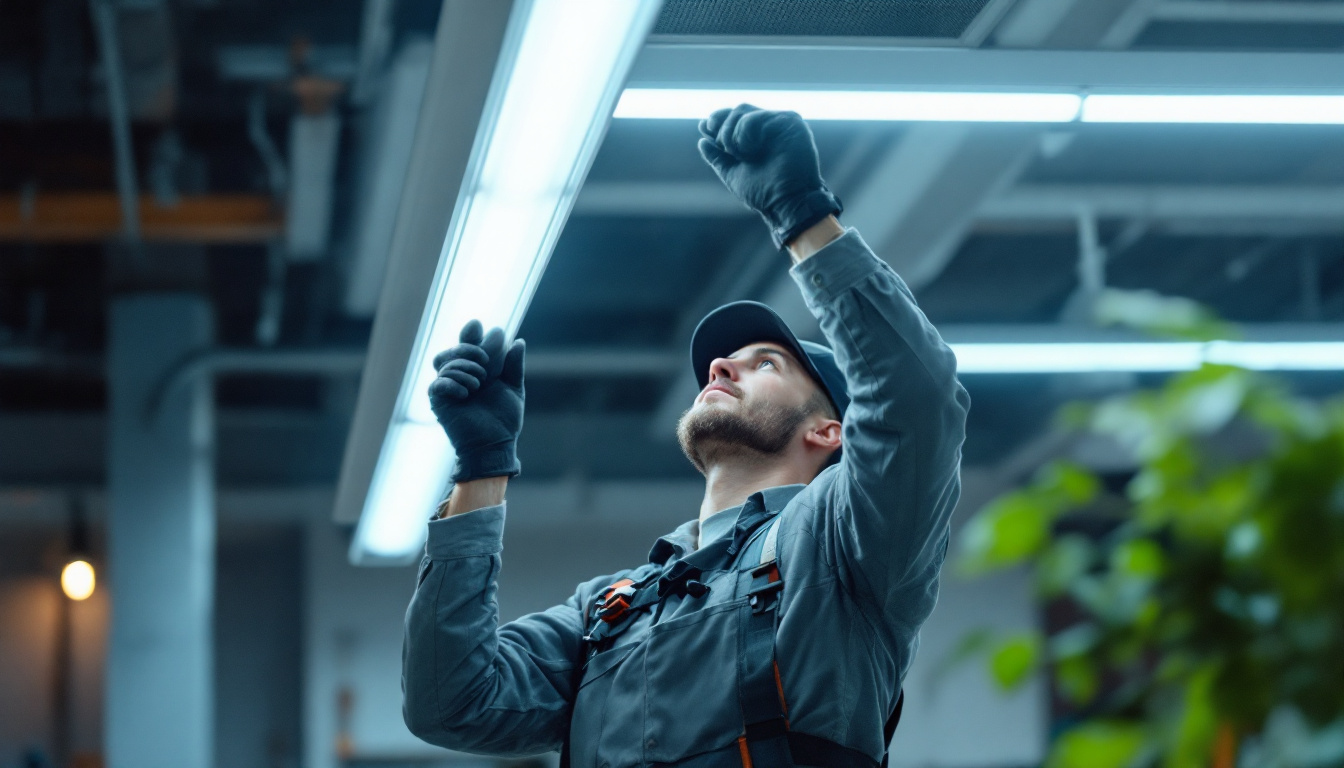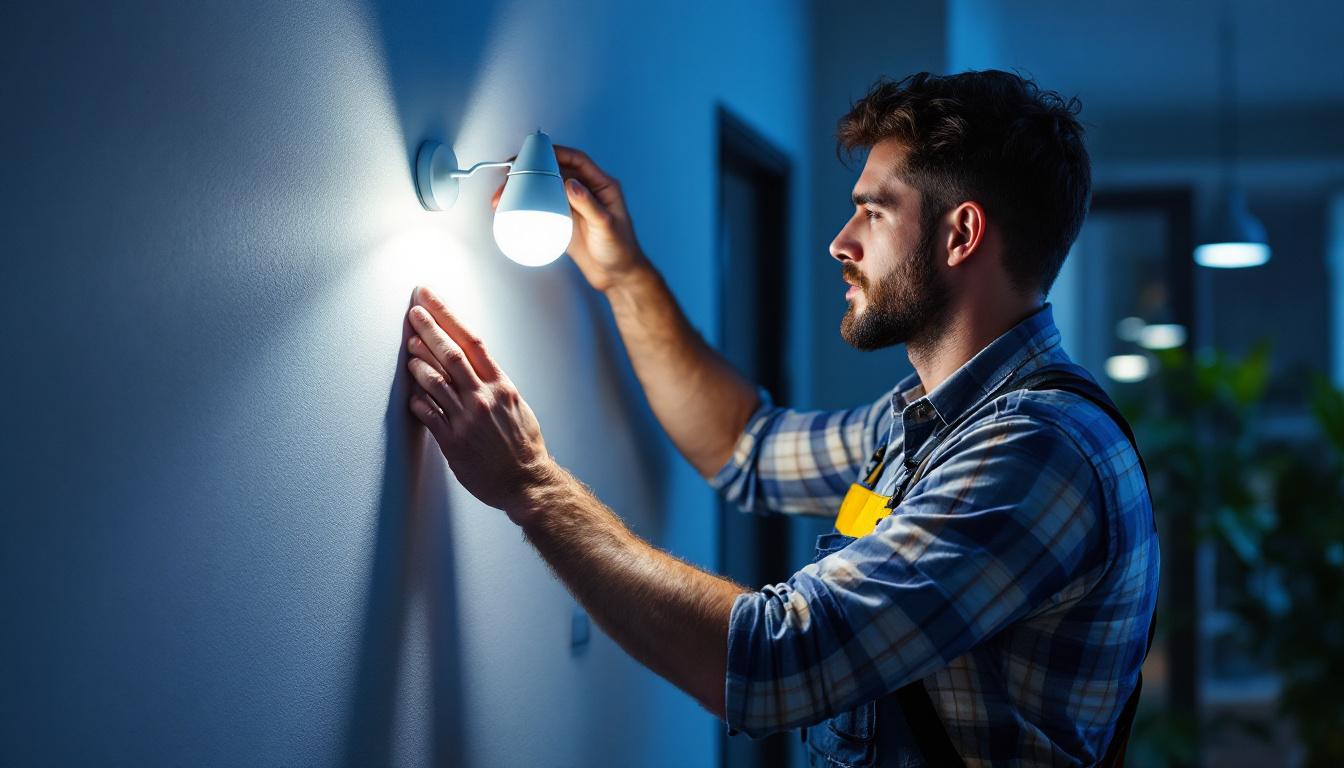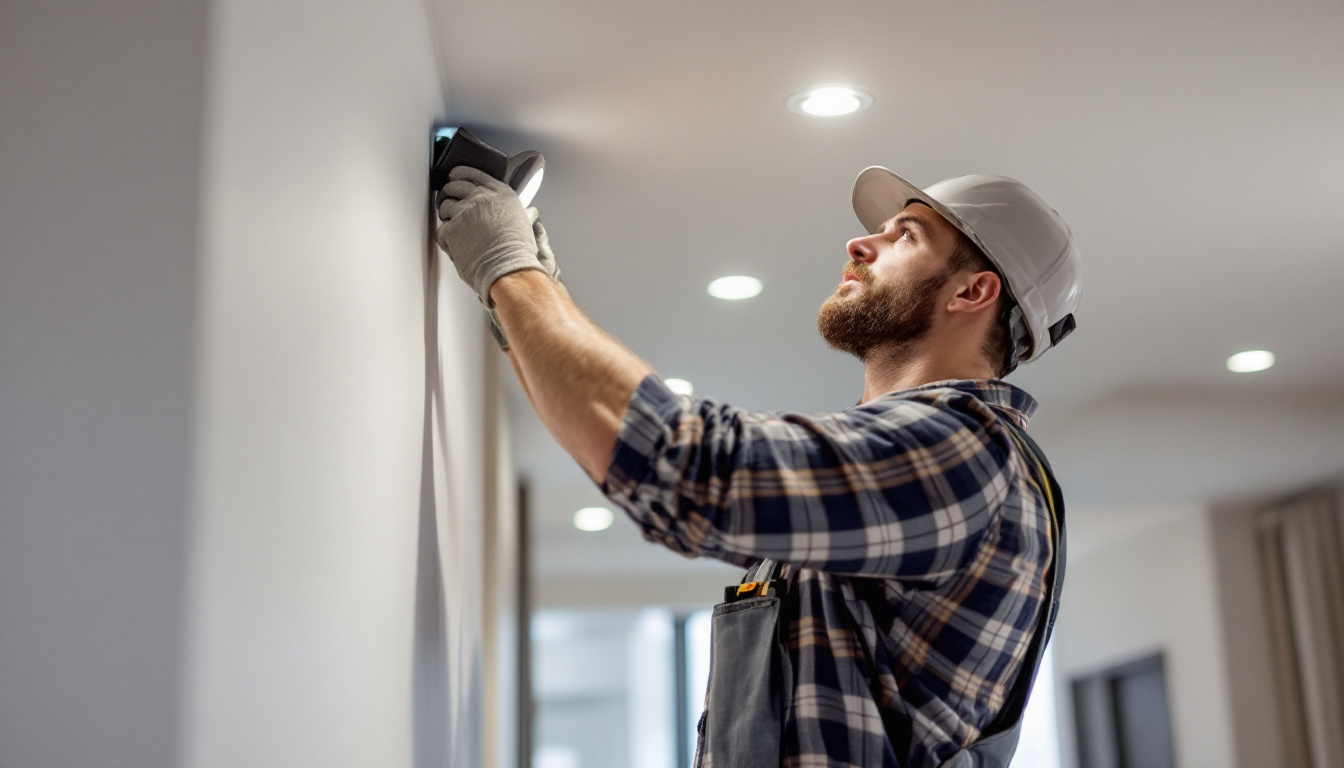
Fluorescent lighting has become a staple in both residential and commercial settings due to its energy efficiency and longevity. Unlike traditional incandescent bulbs, fluorescent lights use a gas-filled tube that emits ultraviolet light when electrified, which is then transformed into visible light by a phosphor coating inside the tube. This technology not only reduces energy consumption but also provides a brighter and more evenly distributed light, making it an ideal choice for various applications. The ability to produce a high lumen output while consuming less wattage has made fluorescent lighting a preferred option for large spaces such as warehouses, schools, and hospitals, where consistent illumination is crucial for safety and productivity.
For lighting contractors, understanding the nuances of fluorescent lighting is essential. This knowledge not only aids in the selection of the appropriate fixtures but also enhances the overall installation process. With the right approach, contractors can ensure that their clients benefit from optimal lighting solutions that meet both aesthetic and functional needs. Additionally, familiarity with the different types of fluorescent bulbs, such as T5, T8, and T12, allows contractors to make informed decisions that align with energy codes and sustainability goals, ultimately leading to more satisfied clients.
One of the primary advantages of fluorescent lighting is its energy efficiency. These bulbs consume significantly less electricity compared to incandescent bulbs, which can lead to substantial cost savings over time. Additionally, fluorescent lights have a longer lifespan, often lasting up to ten times longer than traditional bulbs. This longevity reduces the frequency of replacements, which is particularly beneficial in commercial settings where maintenance can be a significant expense. The durability of fluorescent tubes also means they are less likely to break, making them a safer option for high-traffic areas.
Moreover, fluorescent lights are available in a variety of color temperatures, allowing contractors to choose the right hue for different environments. Whether it’s a cool white for an office space or a warmer tone for a retail setting, the versatility of fluorescent lighting makes it a popular choice among contractors and clients alike. In addition to color temperature, fluorescent lighting can also be dimmed or controlled with electronic ballasts, providing further customization to suit specific tasks or moods. This adaptability not only enhances the ambiance of a space but also contributes to energy savings by allowing users to adjust the light output according to their needs, making fluorescent lighting an excellent choice for dynamic environments.
Before diving into the installation process, proper preparation is crucial. This stage involves gathering the necessary tools and materials, as well as ensuring that the workspace is safe and conducive to a smooth installation. Lighting contractors should take the time to review the specifications of the fluorescent bulbs and fixtures to be installed, as different models may have unique requirements.
To successfully install fluorescent light bulbs, contractors should have a few essential tools on hand. Commonly needed items include a ladder, screwdriver, wire cutters, and a voltage tester. Having these tools readily available can streamline the installation process and minimize delays.
In addition to tools, the right materials are also necessary. This includes the fluorescent bulbs themselves, compatible fixtures, and any additional wiring or connectors that may be required. Ensuring that all materials are on-site before starting the installation can help prevent interruptions and ensure a more efficient workflow.
Safety should always be the top priority when working with electrical installations. Before beginning any work, contractors should turn off the power to the area where the installation will take place. This can be done at the circuit breaker to ensure that no electricity is flowing to the fixtures being worked on.
Additionally, using personal protective equipment (PPE) such as gloves and safety glasses can help protect against potential hazards during the installation process. It is also advisable to work with a partner when handling larger fixtures or working at heights to ensure safety and efficiency.
Once the preparation is complete, contractors can proceed with the installation of fluorescent light bulbs. This process can vary slightly depending on the specific type of fixture being installed, but the following steps provide a general guideline that can be adapted as needed.
Before installing new fluorescent bulbs, it is essential to safely remove any existing fixtures. Begin by ensuring that the power is off, then carefully detach the old fixture from the ceiling or wall. This may involve unscrewing mounting brackets or disconnecting wires. It is important to take note of how the old fixture was connected, as this information will be helpful during the installation of the new fixture.
Once the old fixture is removed, inspect the wiring for any signs of damage or wear. If any issues are detected, it is advisable to address them before proceeding with the installation of the new fluorescent fixture. This can help prevent future problems and ensure a safe and reliable lighting solution.
With the old fixture removed, the next step is to install the new fluorescent fixture. Begin by positioning the fixture in the desired location, ensuring that it is level and properly aligned. Secure the fixture to the ceiling or wall using the appropriate mounting hardware, following the manufacturer’s instructions for installation.
After the fixture is securely in place, connect the wiring. This typically involves matching the wires from the fixture to the corresponding wires in the electrical box. Common color codes include black for hot wires, white for neutral, and green or bare for ground. Make sure to use wire nuts to secure the connections and ensure that there are no exposed wires.
Once the fixture is installed and wired correctly, it is time to insert the fluorescent bulbs. Depending on the type of fixture, bulbs may need to be twisted or pushed into place. It is important to handle the bulbs carefully, as they can be fragile. Ensure that the bulbs are seated properly to avoid flickering or other issues once the power is restored.
After the bulbs are installed, replace any covers or diffusers that may have been removed during the installation process. This not only protects the bulbs but also helps diffuse the light for a more even distribution.
After completing the installation, it is crucial to test the new fluorescent lighting to ensure everything is functioning correctly. This step involves restoring power to the circuit and turning on the fixture to check for proper operation.
Once the power is restored, contractors should observe the new fluorescent fixture to ensure that it illuminates as expected. Look for any signs of flickering or dim lighting, which could indicate an issue with the installation or the bulbs themselves. If any problems are detected, it may be necessary to troubleshoot the installation, checking connections and ensuring that the bulbs are properly seated.
Additionally, it is advisable to test the fixture over a period of time to ensure consistent performance. This can help identify any potential issues that may arise after the initial installation, allowing for timely adjustments to be made.
Once the fixture has been tested and is functioning properly, contractors should take the time to clean up the work area. This includes disposing of any old fixtures, packaging, or debris generated during the installation process. A clean workspace not only enhances safety but also leaves a positive impression on clients.
Finally, it may be beneficial to provide clients with information on how to maintain their new fluorescent lighting. This can include tips on cleaning the fixtures and bulbs, as well as recommendations for when to replace bulbs to ensure optimal performance.
Even with careful installation, issues can sometimes arise with fluorescent lighting. Understanding common problems and their solutions can help contractors address concerns efficiently and maintain client satisfaction.
One of the most common issues with fluorescent lighting is flickering. This can be caused by several factors, including loose connections, incompatible bulbs, or aging ballasts. If flickering occurs, contractors should first check all connections to ensure they are secure. If the connections are tight, it may be necessary to replace the ballast or the bulbs themselves, particularly if they are nearing the end of their lifespan.
Another issue that may arise is dim lighting, which can be frustrating for clients expecting bright illumination. Dim lighting can be caused by insufficient wattage, faulty bulbs, or issues with the fixture itself. Contractors should verify that the correct wattage bulbs are being used and that they are compatible with the fixture. If the bulbs are functioning properly, it may be necessary to inspect the fixture for any defects or wiring issues.
Installing fluorescent light bulbs is a fundamental skill for lighting contractors, as it not only enhances the quality of lighting in various environments but also contributes to energy efficiency and cost savings. By understanding the installation process, preparing adequately, and addressing common issues, contractors can transform the way they work and elevate their service offerings.
With the right knowledge and tools, contractors can ensure that their clients enjoy the many benefits of fluorescent lighting, creating spaces that are both functional and aesthetically pleasing. As the demand for energy-efficient solutions continues to grow, mastering the installation of fluorescent lighting will remain a valuable asset in the contractor’s toolkit.
Ready to elevate your lighting installations with the efficiency and quality of fluorescent light bulbs? Look no further than LumenWholesale for all your lighting needs. Our extensive selection of spec-grade lighting products is designed to meet the highest industry standards, ensuring you deliver reliable and high-performance lighting solutions to your clients. With unbeatable wholesale prices and the convenience of free shipping on bulk orders, you can trust LumenWholesale to provide premium lighting without the premium price tag. Discover the best value in wholesale lighting and make your next project shine with LumenWholesale.

Discover essential tips and common pitfalls for lighting contractors working with LED light bulbs.

Discover expert strategies and innovative techniques for lighting contractors to master the installation of light fixture walls.

Discover why outdoor lighting fixtures with dusk-to-dawn sensors are essential for any successful lighting project.

Discover how incorporating LED recess lights into your projects can elevate your business as a lighting contractor.